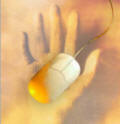Dr. Mary Louise Van Winkle
Professional Staff Development and Instructional Technology Center
|
Make the Technology
Fit You … not
the other way around Using technology for technology’s sake can be like opening Pandora’s Box. Before you open thebox to frustration and confusion, you need to create a technology plan for you. Consider the needs of your students and your goals for the course. Can you use instructional technology to better achieve these goals? Can you use technology to stimulate and engage your students? At the same time, consider your limitations and your students’ limitations. Start with one project at time and keep it simple. Practice first, and always have a backup plan incase of a technological glitch. Encourage feedback from your students and reflect on the outcomes from each use of technology. If it works--great! If it needs improvement, go back to the drawing boards. |
|
|
When enhancing your course’s learning environment with any form of technology, you need to match the course learning outcomes, goals, and time with the tools and techniques available. If you need help, be sure to stop by the TLC for a free consultation. Start with Starters Rather than starting from scratch, spend some time exploring the vast array of educational resources developed by others. Your colleagues, the TLC staff, or Google can probably hook you up with some interesting sites. Have you discovered MERLOT? MERLOT is a free and open resource designed primarily for higher education. You are invited to browse the collection and use or search for materials. Members may add materials, comments and assignments to MERLOT. All are free! Go to www.merlot.org. Selecting Appropriate Technology Tools Keep it simple. Think---"What's in it for me?" How will this tool assist me with organizing and managing my course? How will this tool help me to communicate effectively with my students? Think about student projects and learning outcomes, and then consider the technological tools that might be effective in implementing these projects and achieving the desired learning outcomes. For each of the tools, ask yourself:
Getting Started Create or locate a list of all the hardware and software that you could use in classroom activities. Also include other resources such as books, maps, videos, etc. .
Information Resources:
Have a colleague
review and critique your project and planned use of technology.
Talk Again, start slow and build one project at a time. You’ll be surprised how fast you become comfortable with applying technology to your courses and soon you’ll have a more interactive learning community for your students. You'll be spending less time fielding routine class administration questions from your students and more enjoyable time engaged in your students' learning process. Make technology fit you, contact Nancy Wozniak – ext 8976
MORE |
|
